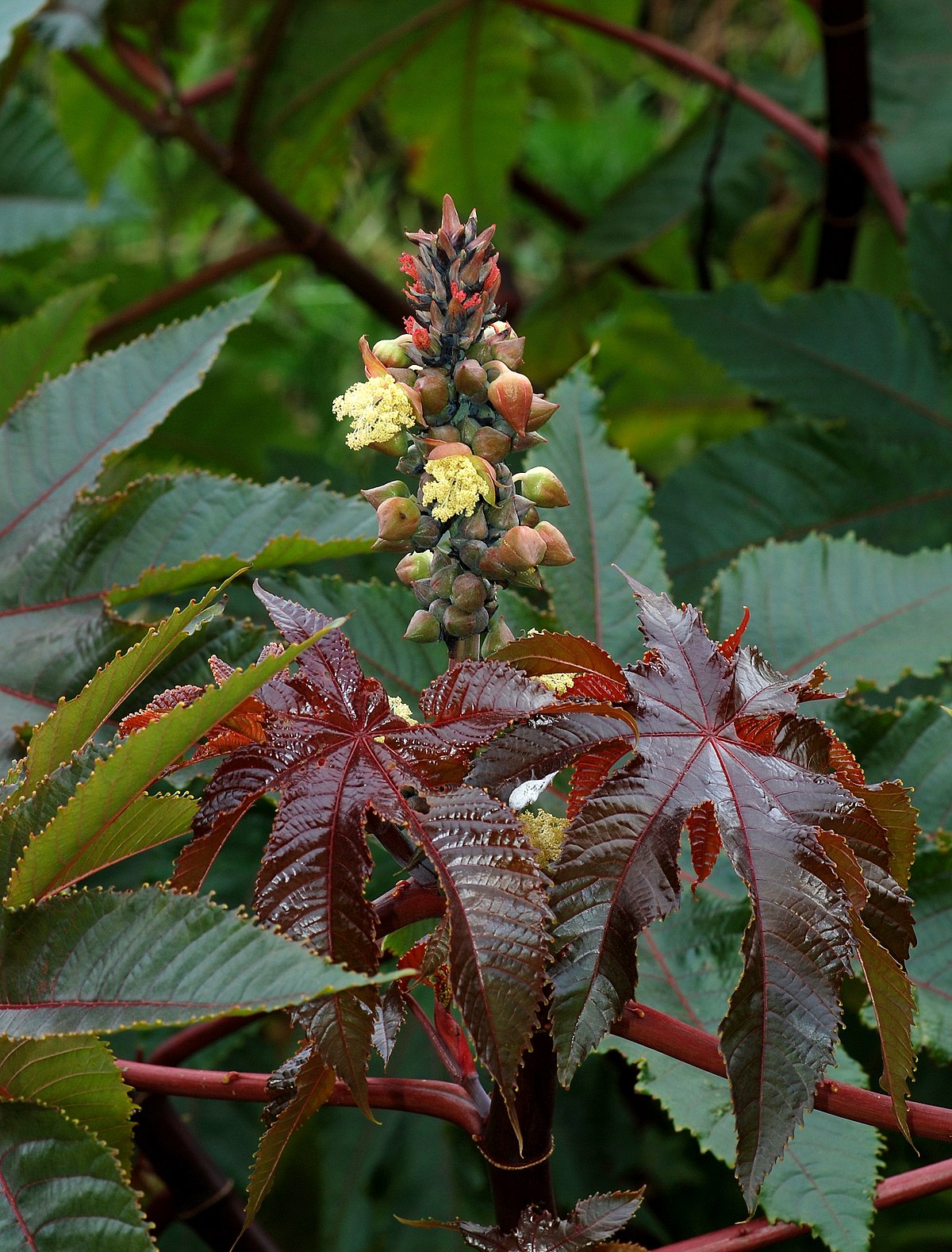Castor bean
(Ricinus)

Description
“Pet poisonous” – Toxic parts: entire plant esp. beans The Ricinus genus, also known as the castor oil plant, is a fascinating and versatile plant species that belongs to the spurge family (Euphorbiaceae). It is believed to have originated from East Africa, but it is now widely cultivated in different parts of the world, particularly in tropical and subtropical regions. The plant is named after its characteristic castor oil, which is extracted from its seeds and used in a wide range of applications, from medicine to industry. However, despite its economic and medicinal significance, the Ricinus genus is also considered a poisonous plant, with all its parts being toxic to humans and animals if ingested. In this article, we will explore the different aspects of the Ricinus genus, from its botanical characteristics to its cultural and medicinal uses, as well as its potential risks and toxicity. Botanical Characteristics The Ricinus genus is a fast-growing and tall plant that can reach a height of up to 40 feet (12 meters) in favorable conditions. It has a thick, woody stem that can grow to a diameter of 1-2 feet (30-60 cm), and its leaves are large and palmate, with 5-12 lobes that are deeply incised. The plant produces both male and female flowers on the same inflorescence, which is a characteristic of the spurge family. The flowers are inconspicuous and lack petals, but they have showy sepals that range in color from green to red or purple. The fruit of the plant is a spiny capsule that contains 3 seeds, which are oval-shaped and covered with a smooth, hard outer shell. Cultivation The Ricinus genus is widely cultivated for its seeds, which are used to extract castor oil, a valuable commodity in the industrial and medical fields. The plant is also grown as an ornamental, due to its attractive foliage and striking inflorescences. However, it is important to note that the plant is highly toxic, and its cultivation should be approached with caution. The seeds of the plant are the most poisonous part, containing a highly toxic protein called ricin, which can cause severe gastrointestinal and neurological symptoms if ingested. The plant can also cause skin irritation and allergic reactions in sensitive individuals, so it is important to wear gloves and protective clothing when handling it. Medicinal Uses Despite its toxicity, the Ricinus genus has been used for medicinal purposes for thousands of years, particularly in traditional medicine. Castor oil, which is extracted from the seeds, is rich in ricinoleic acid, a fatty acid that is believed to have anti-inflammatory and analgesic properties. It has been used to treat a wide range of ailments, including constipation, arthritis, joint pain, and skin conditions such as acne and psoriasis. Castor oil has also been used as a natural remedy for inducing labor in pregnant women, although this practice is not recommended by modern medical practitioners. Toxicity As mentioned earlier, the Ricinus genus is highly toxic, and its toxicity is primarily due to the presence of the protein ricin in its seeds. Ricin is a potent toxin that can cause severe gastrointestinal and neurological symptoms if ingested, and it can be fatal in large doses. Symptoms of ricin poisoning include abdominal pain, diarrhea, vomiting, seizures, and respiratory distress. There is no specific antidote for ricin poisoning, and treatment is primarily supportive, with the aim of managing the symptoms and preventing further absorption of the toxin. It is important to seek medical attention immediately if you suspect that you or someone else has ingested any part of the Ricinus genus. Conclusion The Ricinus genus, or castor oil plant, is a fascinating and versatile plant species that has been cultivated for thousands
Taxonomic tree:







